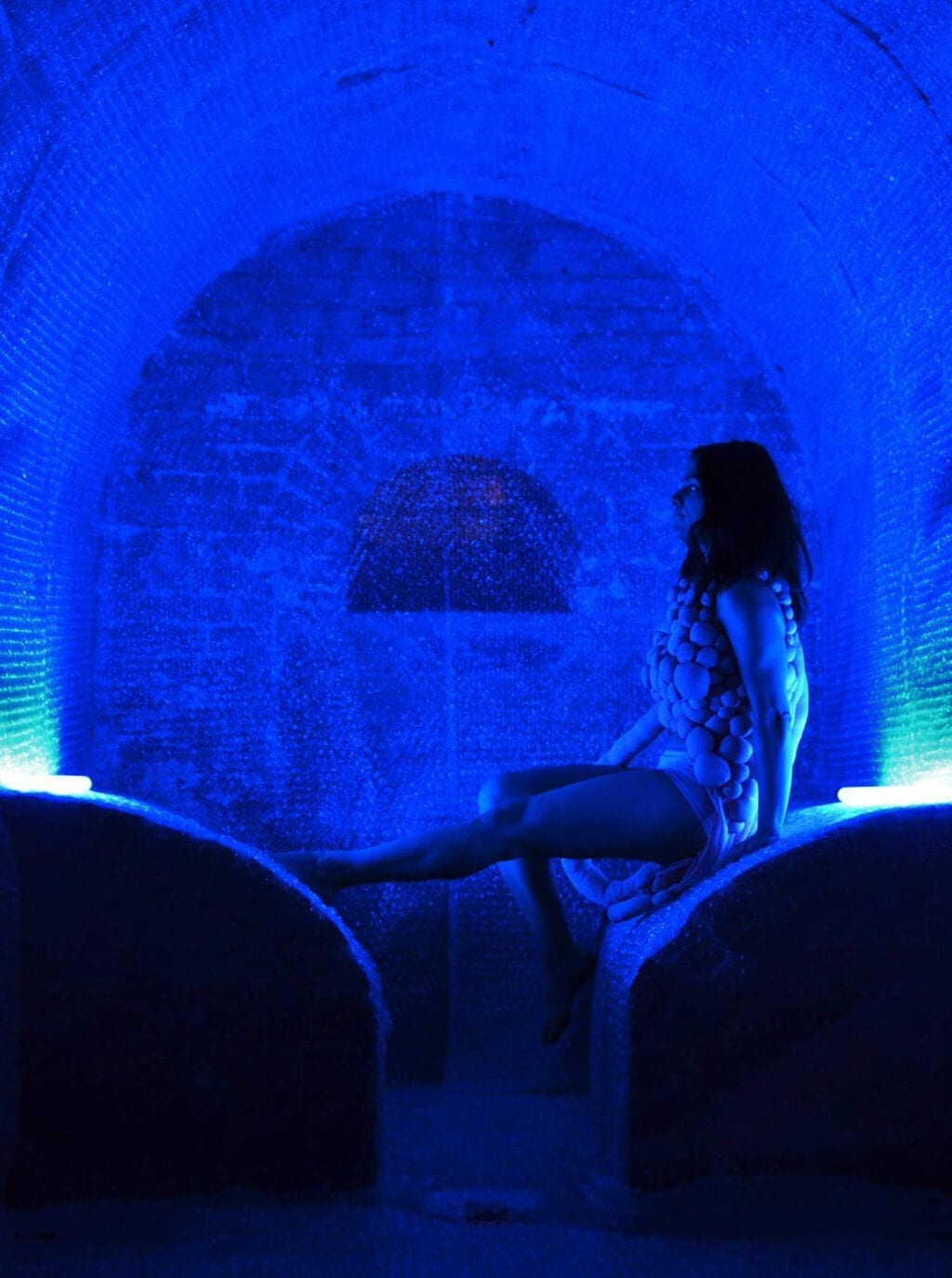To enter the crypt where this play is staged, the audience must first push past obstacles in the entrance – although they are light and easily-moved, the room is pitch-black and the atmosphere claustrophobic. Kane’s last play is erratic, without characters or stage directions, meaning that directors have a lot of freedom when staging this play. In this case, Louizou transports us to an abstract mental landscape, featuring bubble-wrapped rooms, shrouded figures and plastic hangings, through which the audience is lead by four girls who murmur, speak and shout the fragmented dialogue. Each of them seems to represent a different side of the main character: angry, scared, confused, maniacal.
The setting of the crypt is surprisingly apt – not only is it relevant to a play about depression and suicide, but the cold, desolate, often oppressive rooms add a sense of claustrophobia and isolation to the experience. The script flickers between abstract and highly specific, occasionally poetic, language, but this performance remains firmly abstract – the costumes and decorations are visceral, vaguely reminiscent of brains and intestines. There is live music in some rooms, haunting violins and scratchy white noise, which contributes to the intensity of the atmosphere. The performances themselves are visceral and physical, as the actors crawl on the floor, fight each other, run around and scribble on walls. There is no distance between actors and audience, making this production much more immediate and shocking than it would be on a stage.
Although there are some lines in the play which in another context would be darkly funny, in this setting, staring into the actors’ frantic faces, laughter feels out of place. We are confronted with the stark reality of mental illness in this play: struggling to get treatment, not being understood by doctors, being abandoned by loved ones. Although some of these issues are addressed directly and candidly, others are only vaguely alluded to. The abstract nature of the production means that the audience are able to make up their own minds: are the figures in sheets the ghosts of lost loved ones, mental ‘demons’, or a symbol of the character’s frantic struggle to escape from the prison of her own mind? It’s up to us to decide – they can be all three, and more. This is an incredibly powerful production which rises to Kane’s challenge: to make sense of a play which doesn’t make sense.




